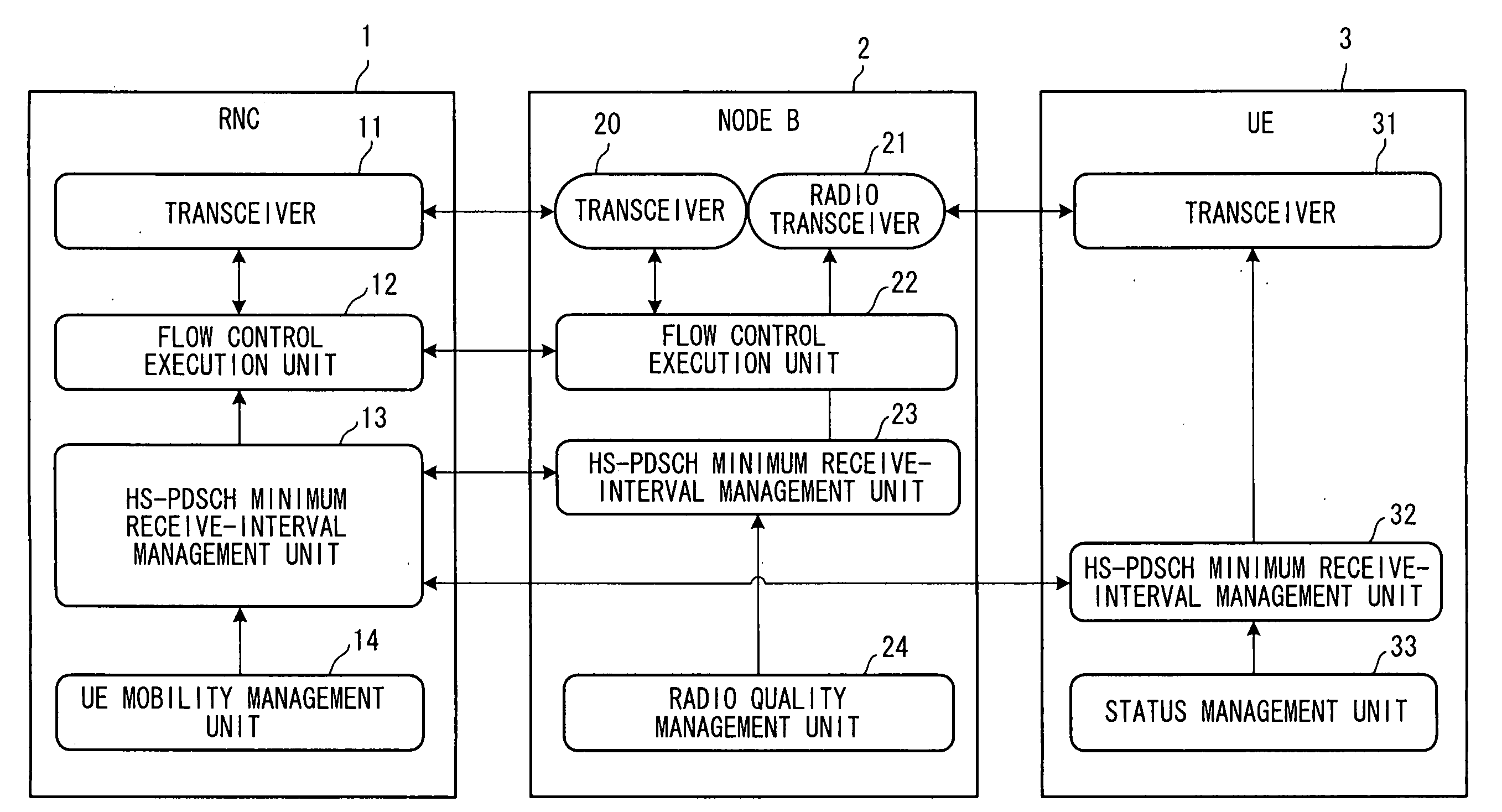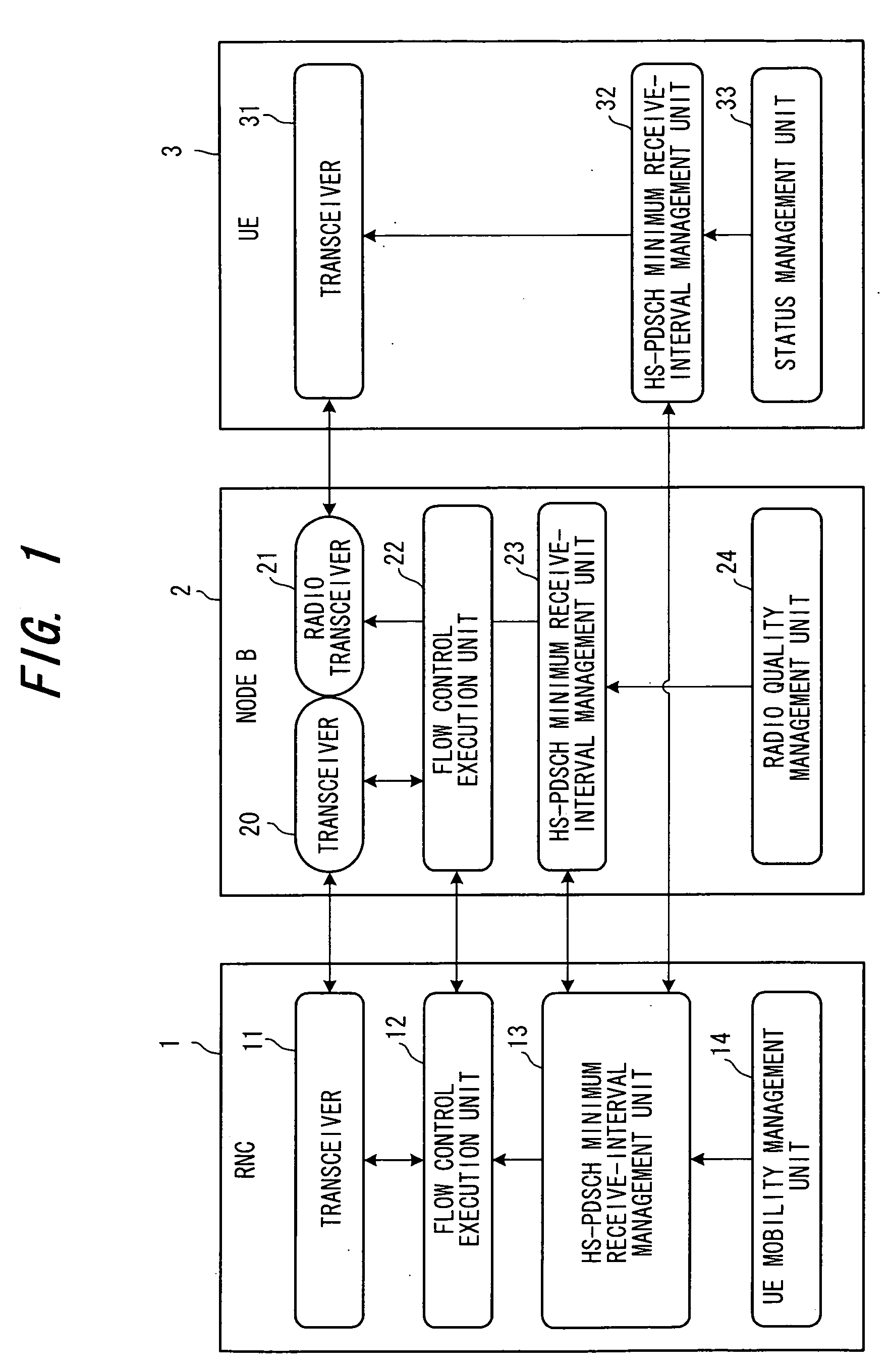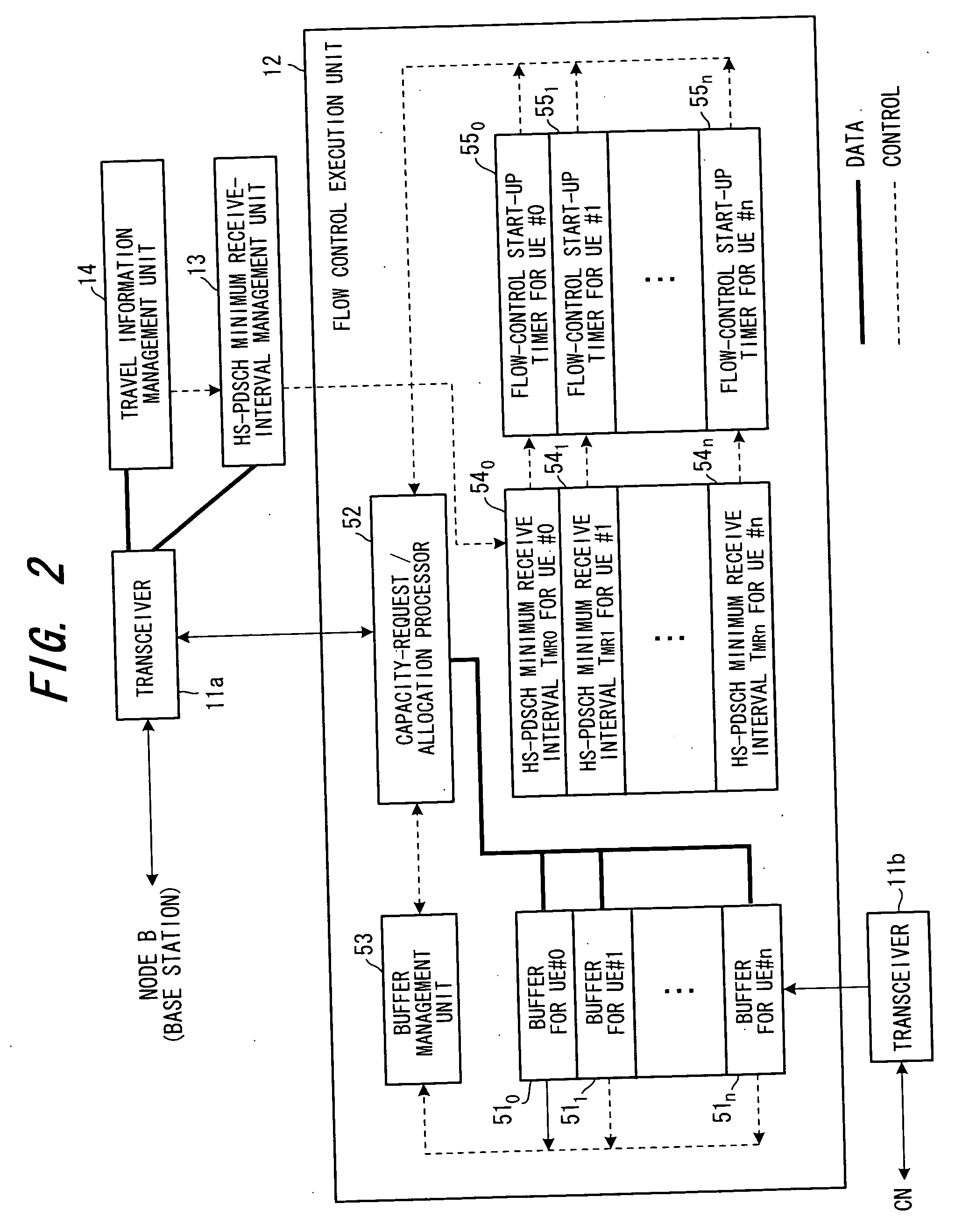Wireless communication network and flow control method
- Summary
- Abstract
- Description
- Claims
- Application Information
AI Technical Summary
Benefits of technology
Problems solved by technology
Method used
Image
Examples
Embodiment Construction
[0072] (A) Overall Communication System
[0073]FIG. 1 is a diagram showing the general configuration of a communication system according to the present invention. The diagram illustrates the functions of nodes and the paths of logical information exchange among these functions.
[0074] Base Station Controller (RNC)
[0075] A base station controller (RNC) 1 is equipped with at least a transceiver 11, a flow control execution unit 12, an HS-PDSCH minimum receive-interval management unit 13 and a UE mobility management unit 14. The transceiver 11 executes processing for sending and receiving packet data to and from a base station 2 based upon flow control.
[0076] The flow control execution unit 12 performs flow control between itself and the base station (Node B) 2 on a per-mobile-station basis and exercises control in such a manner that packet data of each mobile station received from a core network (CN) is transmitted to the base station. Flow control refers to control for transmitting ...
PUM
 Login to View More
Login to View More Abstract
Description
Claims
Application Information
 Login to View More
Login to View More - R&D
- Intellectual Property
- Life Sciences
- Materials
- Tech Scout
- Unparalleled Data Quality
- Higher Quality Content
- 60% Fewer Hallucinations
Browse by: Latest US Patents, China's latest patents, Technical Efficacy Thesaurus, Application Domain, Technology Topic, Popular Technical Reports.
© 2025 PatSnap. All rights reserved.Legal|Privacy policy|Modern Slavery Act Transparency Statement|Sitemap|About US| Contact US: help@patsnap.com



